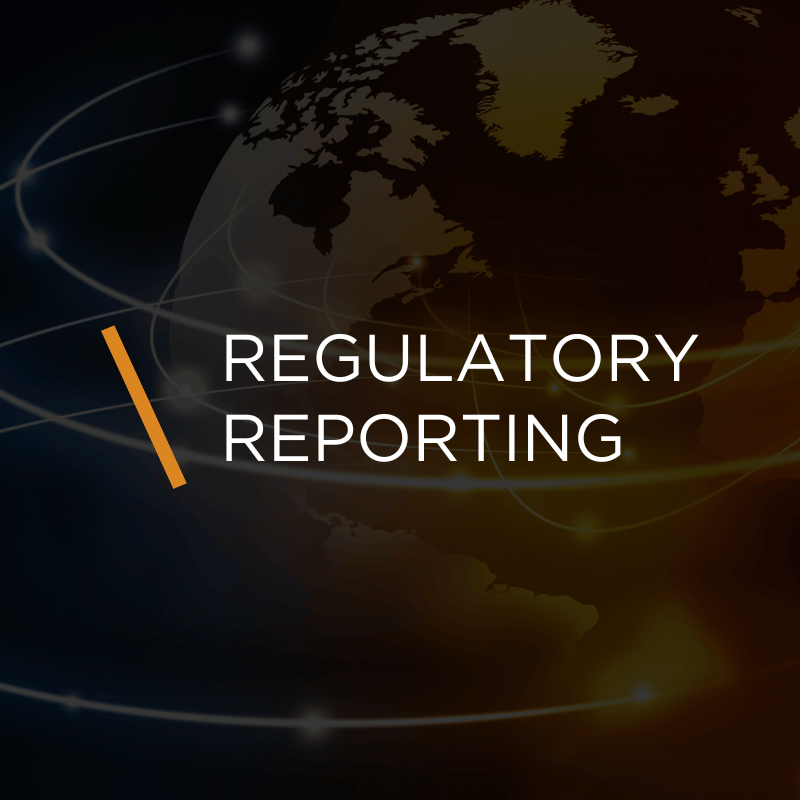With the end of the first quarter of the year, March brought with it a number of developments on a range of areas, including:
- UCITS & AIFMD
- Money Market Fund Regulation
- Liquidity Risk Management
- Short Selling
- ESG
- ELTIF Regulation
See below this month’s regulatory round-up to read about these developments and many more we tracked throughout March.
EUROPE
On 30th March, the European Securities and Markets Authority (ESMA) updated its Q&As on the application of UCITS Directive and AIFMD.
The new Q&As provide clarification on the crystallisation of performance fees, on the timeline of the application of the performance reference period and the scope of the guidelines in respect of ELTIFs.
- Reforms targeting the liability side of MMFs – such as decoupling regulatory thresholds from suspensions/gates to limit liquidity stress, and to require MMF managers to use liquidity management tools such as swing pricing;
- Reforms targeting the asset side of MMFs by e.g. reviewing requirements around liquidity buffers and their use;
- Reforms targeting both the liability and asset side of MMFs by reviewing the status of certain types of MMFs such as stable Net Asset Value (NAV) MMFs and Low Volatility Net Asset Value (LVNAV); and
- Reforms that are external to MMFs themselves by assessing whether the role of sponsor support should be modified. In addition, ESMA is also gathering feedback from stakeholders on other potential changes, particularly linked to ratings, disclosure and stress testing.
For further information on the ESMA proposals, see our blogs below:
On 24th March, ESMA published the results of the 2020 Common Supervisory Action (CSA) on UCITS liquidity risk management.
Overall, most UCITS managers demonstrated that they have implemented and applied sufficiently sound LRM processes. However, in a few cases, some adverse supervisory findings were identified.
Click on our blog below to see the 11 reported areas of improvements.
On 15th March 2021, the three European Supervisory Authorities (ESAs) published a Joint Consultation Paper Taxonomy-related sustainability disclosures and draft regulatory technical standards with regard to the content and presentation of sustainability disclosures pursuant to Article 8(4), 9(6) and 11(5) of Regulation (EU) 2019/2088.
On the 19th March 2021, ESMA’s decision to require holders of net short positions to report at the initial threshold of 0.1% expired. The initial threshold for EU short selling notifications has reverted to 0.2%.
In contrast, net short positions in relation to UK-listed shares will continue to be subject to the initial threshold of 0.1%.
United Kingdom
On 26th March, the Bank of England and Financial Conduct Authority published the findings of their joint survey of UK-authorised open-ended funds.
The survey provides several important insights into funds’ liquidity management:
- Funds have a wide range of liquidity tools available to them, but predominantly use swing pricing.
- Funds intensified and adapted their use of swing pricing during the stress period, although there were large variations in how swing pricing was applied.
- In addition to the use of liquidity management tools, funds managed their liquidity by holding liquidity buffers in the form of cash and non-cash liquid assets.
- Some funds adapted their liquidity management approaches and governance measures temporarily or permanently in response to the Covid stress.
- An indicative liquidity classification suggests that managers of corporate bond funds may be overestimating the liquidity of their holdings.
On the 22nd March, the FCA major shareholding notification portal went live.
All TR-1 notifications in relation to voting rights held in an issuer admitted to trading on a UK regulated market, must now be submitted to the FCA via the major shareholdings notification portal via the FCA’s Electronic Submission System (ESS).
The FCA have also published the updated user guide which provides step by step guidance on how to:
- Submit a new notification – section 3.4
- Upload financial instruments by using a CSV file – section 3.4.3
- Send a subsequent notification – section 3.5
- Correct an existing notification – section 3.6
- Delete a notification – section 3.7
- Download a submitted TR-1 Form – section 3.8
France
- In situations where supervision is fragmented between several authorities due to the use of the management passport, a leading supervisory role should be given to the competent authority in charge of supervising the fund manager to monitor its activities across the EU.
- Certain types of extensive delegation arrangements – such as those where fund managers solely provide middle and back-office services without retaining any portfolio management expertise – should be scrutinized to ensure AIFM and UCITS managers remain ultimately in charge of the key business functions and decisions;
- A thorough examination of the current reporting requirements is necessary to enhance regulators’ capacity to supervise investment funds and monitor the different types of risks that may arise from their activities, from both a micro and macro perspective;
- A common EU framework is needed in order to make the use of LMTs available in all EU jurisdictions with gates becoming a mandatory LMT;
- Further harmonisation and consistency should be introduced between AIFMD, UCITS and MIFID to reduce unnecessary differences in obligations between entities providing the same services.
Following the incorporation of ESMA’s guidelines on performance fees in UCITS and certain types of AIFs (ESMA34-39-992) into position DOC-2021-01, the AMF has updated its policy on UCITS and AIFs.
- Raise the market capitalisation threshold of listed issuers in which ELTIFs are allowed to invest from €500 million to €1 billion;
- Clarify the eligibility of financial undertakings such as acquisition holding companies and SPVs, in order to allow investment in private-equity schemes;
- Authorise ELTIFs dedicated only to professional investors, providing them with a more flexible structure including, for example, the possibility of using derivatives or creating master-feeder structures;
- Remove the minimum entry threshold of €10,000 per retail investor, while maintaining the regulatory requirements to advise and conduct suitability tests prior to any marketing to retail investors;
- Maintain the closed-ended nature of ELTIFs to ensure consistency between the redemption policy and the liquidity profile of underlying assets, but consider periodic liquidity mechanisms and promote trading venues that are likely to offer secondary markets for ELTIFs;
- Should the co-legislators decide to allow ELTIFs to offer more frequent redemptions and therefore switch from closed-end to open-end fund status, provide for strict liquidity management requirements and entrust the supervision of ELTIFs to ESMA.
The AMF have published Position Recommendation DOC-2011-25.
The guide provides a reminder of how certain aspects of the regulations governing CIS should be applied, such as control procedures, maturity management, side pocket funds, compensation procedures, calculating exposure and overall risk, and information for investors (in relation to mergers and in relation to the guaranteed amount of their investment) as well as the monitoring of ETFs.
United States
The Securities and Exchange Commission’s Division of Examinations announced its 2021 examination priorities.
The following is an overview of the Division’s 2021 examination priorities:
- Retail Investors, Including Seniors and Those Saving for Retirement, Through Reg. BI and Fiduciary Duty Compliance
- Information Security and Operational Resiliency
- Financial Technology (Fintech) and Innovation, Including Digital Assets
- Anti-Money Laundering Programs
- The London Inter-Bank Offered Rate (LIBOR) Transition
- ESG
- Disclosures to investors, valuation and filings with the Commission
- Liquidity and disclosures of investment risks and conflicts of interest
- Market infrastructure
The Securities and Exchange Commission (SEC) has announced the creation of a Climate and ESG Task Force in the Division of Enforcement.
The initial focus will be to identify any material gaps or misstatements in issuers’ disclosure of climate risks under existing rules. The task force will also analyse disclosure and compliance issues relating to investment advisers’ and funds’ ESG strategies.
Canada
The Government of Canada has released updated Guidelines on the National Security Review of Investments under the Investment Canada Act. The Guidelines provide investors with procedures that should be followed in the administration of the national security review process set out in Part IV.1 of the Act and in the National Security Review of Investments Regulations
The guidelines also provide a non-exhaustive list of technology areas that may be considered sensitive for the purposes of review under the national security provisions of the Investment Canada Act.
Luxembourg
The Commission de Surveillance du Secteur Financier (CSSF) has published a new Excel form to be included within the approval process of a new sub-fund (or UCI) and AIFM confirmation letter on performance fees – stand-alone AIF.
The new form collects information on the performance fee model and components.
The questionnaire aims at providing the CSSF with information about compliance with ESMA Guidelines on performance fees.
New Zealand
The New Zealand Government has announced that it will retain the Emergency Notification Regime in the Overseas Investment Act 2005
The regime requires foreign investors to notify an intention to take a controlling investment in any New Zealand business, if that results in more than a 25% ownership interest, or increases an existing interest to or beyond 50, 75 or 100%.
Ministers are required to review the notification regime at intervals no more than 90 days apart, to assess whether the effects of the COVID-19 pandemic justify it remaining in force. The review has concluded that the COVID-19 pandemic justifies it continuing until 25 May 2021 when it will again be reviewed.
International
IOSCO has launched a Thematic Review on the implementation of Liquidity Risk Management Recommendations. The Thematic Review aims to assess the extent to which the Recommendations have been implemented through member regulatory frameworks.
The IOSCO 17 recommendations address the following elements of the liquidity risk management process:
- The design process of CIS
- The day-to-day liquidity management of CIS
- Contingency planning.
The Thematic Review report is expected for Autumn 2022.
Click the link to the blog below for further information on the Thematic Review:
Request Product Demonstration
Error: Contact form not found.
















